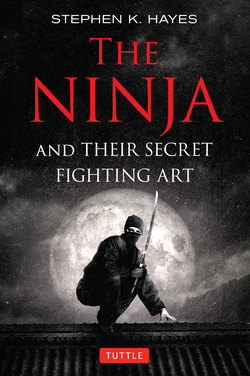Читать книгу The Ninja and Their Secret Fighting Art - Stephen K. Hayes - Страница 9
На сайте Литреса книга снята с продажи.
ОглавлениеPREFACE
Having spent one-third of my life practicing the Asian fighting arts, I was honored to be the first American ever accepted as a personal student by the headmaster of the last historically unbroken ninjutsu tradition in Japan. After my initial training sessions in the moonlit Japanese countryside, my feelings of being honored changed to a growing realization that I had at last found the ultimate fighting art and philosophical system for me.
In the winter of 1978, in the midst of my several years in Japan, I began writing this, my first book, documenting the original teachings of these ancient and undiluted warrior ways. All these decades later, I am still proud of this book. It continues to shine valuable illumination on this so often misunderstood martial art.
I must express my gratitude to Masaaki Hatsumi, thirty-fourth headmaster of the Togakure-ryu ninja tradition, for giving me exactly what I wanted those decades ago. I sought answers unheard of in the greater martial arts world I had deliberately left behind. I became part of the ninja dojo when there were just dozens of people training, years before this book and my others made Masaaki Hatsumi world famous and brought thousands of eager students to his door. What I wanted was the lore of the ninja and their secret fighting art. I was rewarded with knowledge impossible to find in the mainstream martial arts. My teacher granted that to me, though more often than not I had to steal his knowledge; I was shown a path and then challenged to figure out the secrets for myself if I could.
My thanks go out to the staff of the Iga-Ueno Ninja Museum for information on the military aspects of Iga Ryu ninjutsu. They were there for me in the years long before Iga-Ueno became a popular attraction for tourists. I appreciate their allowing me to photograph their displays and reproduce them in this book.
I also wish to thank Rumiko Urata for her long hours of assistance in translating obscure Japanese documents. Who would have guessed in the late 1970s that she would become my bride, and we would celebrate daughters and then grandchildren as the years unfolded?
I greatly appreciate the friendship and aid of Koyu Tanaka. He so generously helped me get established in my new home in Japan. Many were our late night conversations in my humble little house on the Edo River.
And lastly, a thank you nod to the late Charles E. Tuttle, who signed my original contract for this book. He got me started on this wild, twisted adventure that has been my life since those daring days back in the 1970s.
I should mention that in these pages I have done my best to recall my training and conversations as accurately as possible. The conversations have been translated from Japanese into English, and edited for continuity. I assume responsibility for any mistakes or misinterpretations.
—STEPHEN K. HAYES
StephenKHayes.com
